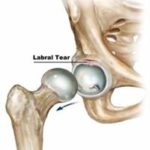What Is the Best Wrist Drop Treatment That Actually Works?
Ever tried to lift your hand and it just… drooped? Like it had a mind of its ownm or none at all? That, my friend, might be a wrist drop. And trust me, it’s more than just annoying. It messes with everyday life in a way only those who’ve been through it truly understand.
If you’ve been asking yourself, “What is the best wrist drop treatment that actually works?” Welcome. We’re diving into what wrist drop really is, why it happens, and most importantly, what you can do to start seeing real results. No fluff, no fake promises, just solid, practical advice that works.
Best Wrist Drop Treatment That Actually Works
Let’s get straight to it. There’s no magic pill or universal fix. The most successful wrist drop recovery plan depends on the root cause whether it’s nerve compression, a fracture, or something deeper like a neurological condition.
The good news? There are clinically-proven treatments that help people restore control, build strength, and get back to their normal lives.
Understanding Wrist Drop: More Than a Floppy Hand
Wrist drop also known in the medical world as radial nerve palsy is when your wrist can’t stay up on its own. It feels weak, unresponsive, or simply non-functional.
What causes it?
- Radial nerve injuries (common from fractures or trauma)
- Long-term pressure on the upper arm (like sleeping on it wrong)
- Neurological conditions (such as multiple sclerosis)
- Strokes or brain injuries
- Infections or metabolic disorders in rare cases
Step One: Accurate Diagnosis
Before jumping into any therapy, you’ll need to find out what’s really going on. That means getting a full assessment, think nerve conduction studies, physical exams, maybe even imaging.
Why’s this important? Because the best treatment for wrist drop depends entirely on what’s causing it.
How to Treat Wrist Drop: Real Solutions That Work
If you’re wondering how to treat wrist drop effectively, these are the most recommended, research-backed methods people are using today.
1. Targeted Physiotherapy
This is the cornerstone of wrist drop recovery. Physiotherapy focuses on regaining wrist extension, finger mobility, and hand coordination.
Common techniques include:
- Range-of-motion exercises
- Strength-building routines for wrist and finger extensors
- Nerve gliding movements to reduce compression
- Mirror therapy for stroke-related wrist dysfunction
A dedicated physical therapist can help tailor these to your specific situation, turning small movements into major milestones.
2. Occupational Therapy: Get Back to Real Life
If physio is the engine, occupational therapy is the GPS. It helps you regain the ability to perform everyday tasks, even while your wrist is still in recovery mode.
Expect:
- Wrist support devices (splints or braces)
- Hand-function retraining
- Adaptive tools for grooming, eating, or writing
- Energy conservation techniques
This is especially useful if your wrist drop comes from a stroke or other brain-related event.
3. Supportive Gear: Splints, Braces & More
Using a cock-up wrist splint can make a huge difference. These devices keep your hand in a functional position, helping you type, hold utensils, and move without pain.
Benefits:
- Reduces strain on weak muscles
- Prevents deformities or joint contractures
- Encourages healing by promoting correct posture
You might only need it temporarily but while your wrist is finding its strength again, it’s a great backup dancer.
4. Electrical Muscle Stimulation (EMS)
A fancy term, but a simple concept EMS delivers small electric pulses to the muscles that have stopped responding due to nerve damage. This encourages them to stay active, preventing atrophy and improving circulation.
It’s not painful and works best when paired with regular therapy.
5. Surgical Intervention (In Rare Cases)
For more severe or long-term cases, surgery could be the best route especially if the radial nerve is torn or badly compressed.
Surgical options include:
- Nerve decompression
- Tendon transfer surgeries
- Nerve grafting or repair
It’s not usually the first choice, but in some cases, it can dramatically improve wrist function.
Natural Remedies: Complement, Don’t Replace
While no herbal tea or massage will “cure” wrist drop on its own, certain natural approaches can complement your main treatment:
- Gentle heat therapy to relax stiff muscles
- Massage to improve circulation and reduce tightness
- Anti-inflammatory diets (think turmeric, leafy greens, omega-3s)
- Breathwork or yoga for better nerve and muscle control
Use these to support recovery, not as a stand-alone solution.
How Long Until You Regain Wrist Movement?
Recovery varies depending on the severity of nerve damage and how early treatment starts.
Typical recovery timelines:
- Mild compression: 3–8 weeks
- Moderate nerve damage: 3–6 months
- Severe or post-surgical: 6–12 months or more
The key? Stick to the plan, don’t skip therapy, and celebrate small wins. Healing may be slow, but it is possible.
FAQs About Wrist Weakness Treatment
- Can wrist drop heal without treatment?
In very mild cases yes. But most people need therapy to restore full function. It’s better to start early and avoid complications.
- Is wrist drop permanent?
It can be, but often isn’t. With proper treatment, many people regain significant (or even full) movement and strength.
- What’s the fastest way to fix wrist drop?
Consistent physiotherapy, a supportive brace, and possibly EMS. Fast doesn’t always mean best but targeted care shortens the road.
- Does wrist drop always require surgery?
Not at all. Surgery is a last resort. Most people recover with therapy and non-invasive tools.
- Can I work or drive with a wrist drop?
Absolutely with modifications. Occupational therapists can help you adapt tools and techniques while you recover.
Conclusion: Let Your Wrist Rise Again
If you came here asking, “What is the best wrist drop treatment that actually works?”, now you know it’s not a single therapy, but a custom combo tailored to your unique situation.
Whether it’s physical therapy, splints, electrical stimulation, or surgery the goal is always the same: to get your wrist working again, so life doesn’t feel half as hard.
The road to recovery might be slow and a little bumpy, but with the right tools, support, and mindset, you’ll get there one stretch, one rep, one day at a time.











